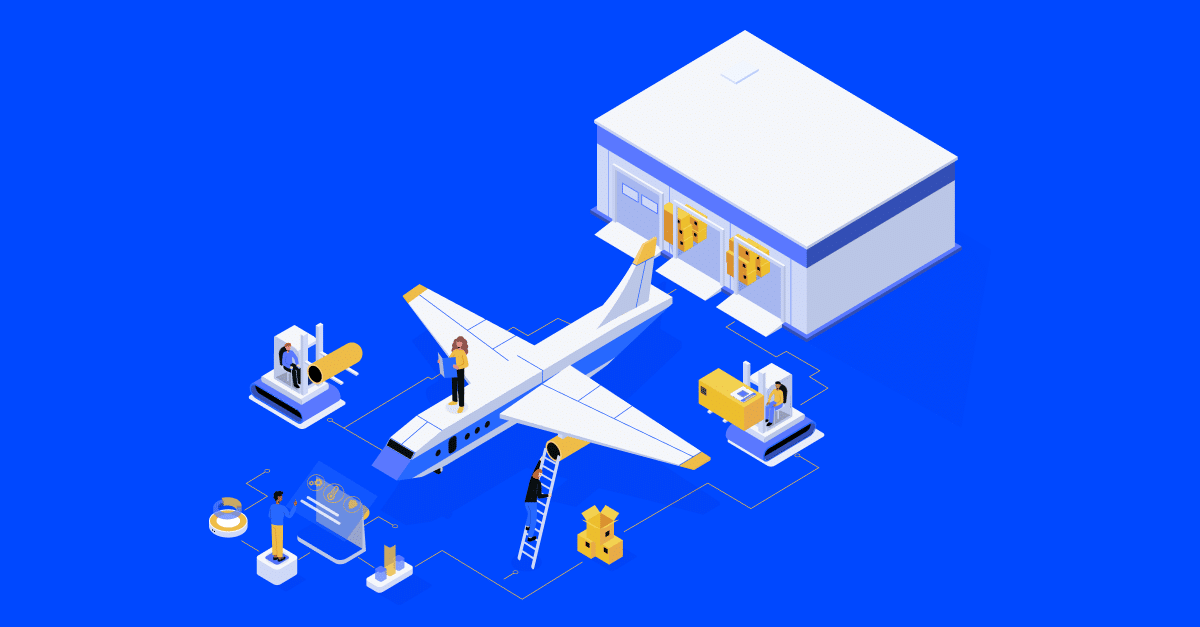By Michael Rivera, PhD
Data has always been integral to the aerospace industry. From early aviation to modern aerospace manufacturing technology, data has played a critical role in decision-making, safety, and operational efficiency. However, the amount and complexity of data in aerospace have grown exponentially. The industry now deals with vast volumes of real-time data, extending far beyond ticket reservations and flight simulations.
From aerospace materials selection to in-flight monitoring and post-flight maintenance, big data is at the heart of digital transformation. Companies specializing in aerospace manufacturing automation and aerospace quality control are leveraging data-driven solutions to optimize efficiency and reduce errors.
The Role of Big Data in Aerospace Manufacturing and Aircraft Production
Big data is driving transformation across the aerospace supply chain, from raw materials to final aircraft production. Aerospace manufacturing companies, such as Boeing and Airbus, use data analytics to improve aircraft efficiency and reduce operational costs. SpaceX has also adopted big data to enhance spacecraft manufacturing and streamline the production of reusable rockets.
The commercial aircraft sector is particularly competitive, requiring commercial aircraft manufacturing firms to adopt cutting-edge technologies. Airlines must continuously seek innovative ways to outperform rivals, boost productivity, and eliminate inefficiencies. Aerospace manufacturing challenges, such as supply chain disruptions and production delays, can be mitigated through advanced data analytics and predictive maintenance.
This is where the Internet of Things (IoT) and big data analytics provide a significant competitive advantage.
How IoT and Big Data Improve the Aerospace Manufacturing Process
Big data is characterized by high volume, high velocity, and a variety of data sources. Traditional data management methods struggle to handle such complexity, making real-time decision-making difficult. IoT-enabled data collection offers an advanced solution, enhancing aviation manufacturing processes and operational workflows.
1. Optimizing Aerospace Manufacturing with IoT Sensors
IoT sensors are now embedded in aviation component suppliers’ production processes to collect data in real time. These sensors monitor manufacturing equipment, detect defects in aerospace materials, and ensure compliance with aerospace manufacturing safety standards.
For example, Rolls-Royce uses IoT sensors in jet engine production to analyze performance data and predict potential failures before they occur. This reduces downtime and improves operational efficiency in defense aerospace manufacturing and commercial aviation.
2. Enhancing Airport Navigation and Baggage Tracking with Aerospace Manufacturing Technology
Flying can be stressful, but IoT is making airport experiences smoother. Airports like Miami International Airport use IoT-powered navigation to help passengers find their way. Airlines, such as Delta, employ baggage tracking technology to reduce luggage loss, enhancing customer satisfaction and operational efficiency.
3. Climate Control and Fuel Economy in Aerospace Manufacturing and Operations
Passenger experience is a critical factor in the aviation industry. Airlines are now using IoT-based temperature sensors to improve in-flight climate control. These sensors adjust cabin temperature based on external weather conditions and passenger comfort preferences.
Fuel efficiency is another priority. IoT sensors collect data on engine performance and fuel consumption, helping airlines optimize routes and reduce costs. This technology plays a crucial role in both commercial aircraft manufacturing and defense aerospace manufacturing, where efficiency and cost reduction are vital.
4. Predictive Maintenance and Aerospace Quality Control
Predictive maintenance, enabled by big data analytics, is revolutionizing aircraft upkeep. IoT sensors continuously monitor aircraft components, detecting anomalies before they lead to critical failures. This approach enhances safety, reduces maintenance costs, and minimizes flight delays.
For instance, Southwest Airlines uses IoT sensors to monitor altitude, stability, wind speed, and other critical parameters. These insights allow for proactive maintenance, ensuring that aircraft remain operational and safe for passengers.
Furthermore, aerospace quality control measures are improved through data-driven testing methods, ensuring that every component meets stringent aerospace manufacturing safety standards.
5. Streamlining the Aerospace Supply Chain with Big Data
The aerospace supply chain is complex, involving numerous aviation component suppliers, manufacturers, and logistics providers. Big data enables real-time tracking of materials, ensuring that components arrive on time and meet quality specifications.
IoT-powered supply chain monitoring helps trigger inventory restocking, prevent bottlenecks, and optimize production schedules. By leveraging big data, aerospace manufacturing companies can mitigate supply chain risks and enhance efficiency.
6. The Future of Aerospace Manufacturing: AI, Automation, and Smart Factories
The future of aerospace manufacturing lies in automation, artificial intelligence, and advanced analytics. Aerospace manufacturing automation is already transforming production lines, reducing human error, and improving efficiency.
Emerging technologies such as 3D printing and AI-driven design optimization are set to redefine aircraft production. These advancements will enable faster prototyping, lightweight component manufacturing, and cost-effective production methods.
Additionally, the rise of urban air mobility, electric aircraft, and space tourism will create new opportunities in spacecraft manufacturing and next-generation aviation manufacturing processes. Companies that embrace digital transformation and data-driven decision-making will remain at the forefront of industry innovation.
Conclusion
The aerospace industry is undergoing a data revolution. From aerospace materials selection to aerospace quality control and predictive maintenance, big data is optimizing operations at every stage. IoT-powered solutions are improving passenger experiences, streamlining the aerospace supply chain, and enhancing safety across the industry.
At Thinaer, we help businesses harness the power of data to drive digital transformation. Our solutions enable companies to optimize manufacturing processes, improve operational efficiency, and gain a competitive edge in the aerospace industry.
Contact us today to explore how data-driven innovation can transform your business.


